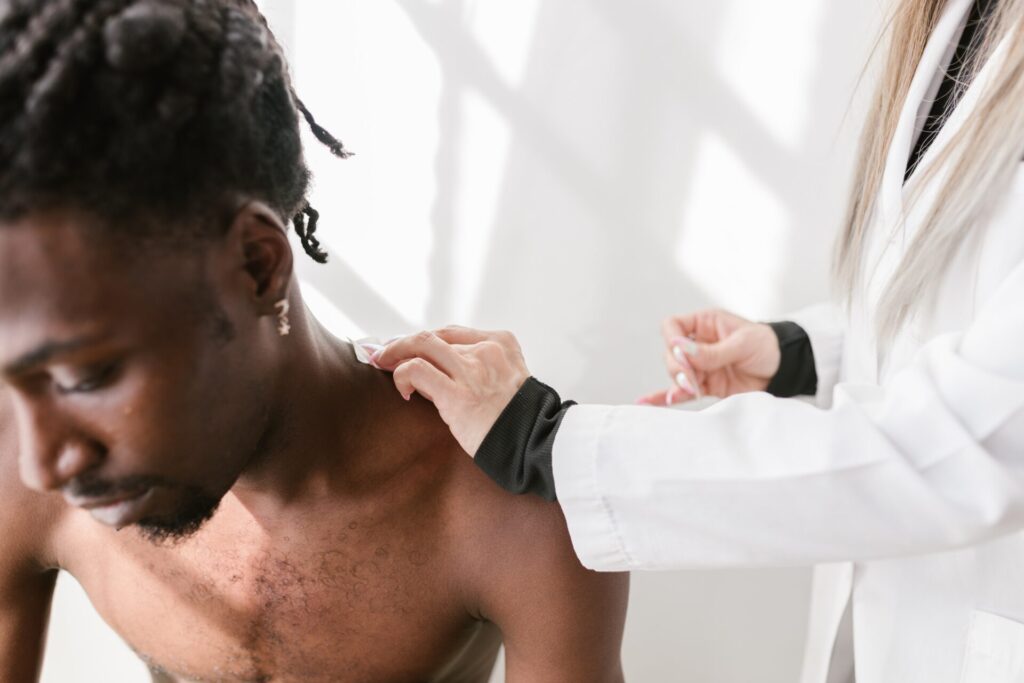Recovering from Collarbone Pain: Effective Physical Therapy and Exercises
Introduction
Commonly associated with shoulder discomfort or strain, collarbone pain results from age-related changes, trauma, or muscle imbalances. Connected to the sternum and the shoulder joint, the collarbone is vital to shoulder stability and movement. Painful experiences vary, with arthritis among the numerous factors that may cause it.
Repetitive movements like weightlifting or overhead reaching motions during sports can be causes of collarbone pain. Restoring strength and mobility in the area and improving the overall function of the shoulder joint can be achieved through physical therapy. A certified therapist works to identify and address the underlying causes of collarbone pain through personalized therapy treatments.
What To Expect At Physical Therapy
If’re experiencing collarbone pain, it’s best to seek aid from a physical therapist’s professional guidance. The first step they will take is to evaluate your symptoms through a comprehensive examination of your medical history and testing the range of motion and muscle strength of your shoulder joint. During this evaluation, they will identify painful movements or structural imbalances, which will help pinpoint the root cause of your pain.
Based on the findings of the evaluation, the physical therapist will design a personalized treatment plan to cater to your specific needs. This plan may involve a combination of therapeutic exercises, including shoulder stretching and strengthening, manual therapy techniques like massage or joint mobilization, posture correction, and instruction in the correct ergonomics for repetitive activities. Additionally, for added relief, the plan might also include electrical stimulation or ice/heat application. With the guidance of a professional physical therapist, you will optimize outcomes and find the best path for a speedy and healthy recovery.
What Types Of Exercises You Might Do
Looking to alleviate collarbone pain? Here are some physical therapy exercises you might find helpful:
- Doorway stretch: Lean forward towards one side while placing forearms against a door frame and hold this position for 30 seconds.
- Scapular setting exercises: Lie down with arms at the sides, palms facing up. Slide your shoulder blades back while lifting your head slightly off the floor.
- Wall slides exercise: Start standing next to a wall with feet apart hip-width. Slowly slide down into a squat position while keeping your back straight against the wall.
- Internal/external rotation exercises: Start by lying down with one arm at your side, elbow bent at a 90-degree angle. Rotate your upper arm and forearm away from your body, and then back towards it.
- Rotator cuff exercise: Lie down with your arms out to the sides at a 90-degree angle, elbows bent and pointed up. Lift your hands up slightly off the ground until your upper arms are parallel with the floor, hold this position for 5 seconds, and then lower down again.
- Seated press-ups: Sit on the edge of a chair with arms extended straight out, palms facing forward. Push your arms straight out away from your chest and hold for 5 seconds before releasing them back again.
These exercises can help improve range of motion and strength, reducing discomfort and optimizing function for everyday activities, whether it’s work-related tasks or recreational activities.
How Long Recovery Takes
The length of recovery time depends on several factors including severity & type (dislocation vs fracture)of injury along with the patient’s age, lifestyle habits, and adherence to the treatment program provided by PT. This includes working on your home exercise program prescribed to support the shoulder pain. Duration varies from person however typically people experience some reduction within 6 weeks after starting treatment though full recovery could take up 3-6 months depending individual cases.
Conclusion
Physical therapy effectively treats collar bone pain from different sources, like trauma, age-related inflammation, or poor posture causing muscular imbalance and instability. PT professionals create customized treatment plans after assessing the patient’s condition through subjective and objective examination, focusing on addressing underlying factors causing and aggravating symptoms. Recovery ensures maximum functional outcome and returns to normal daily activity levels without traumatic or prolonged injury limitations.

